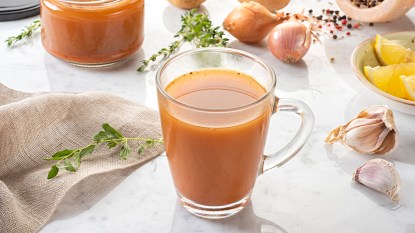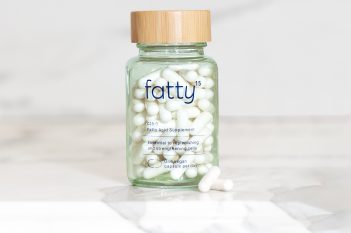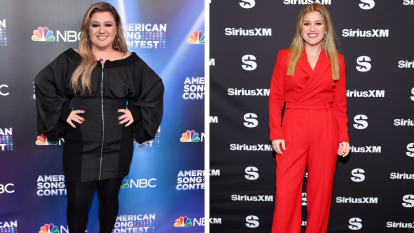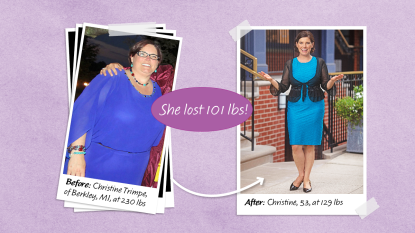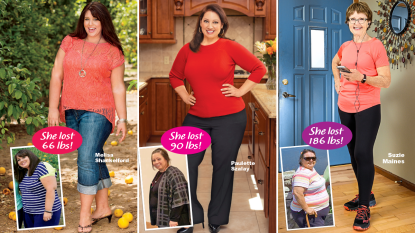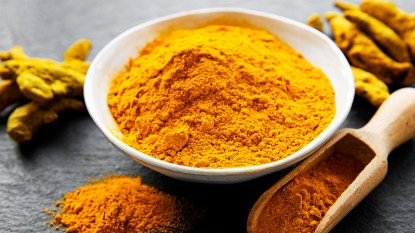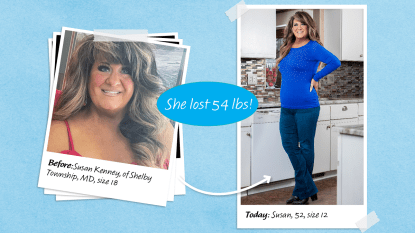New Twist on Whole30 Is Helping Women Lower Cholesterol, Eliminate Pain & Lose Serious Weight
Groundbreaking study shows how eating plant-based meals for 30 days helps women get healthy & slim
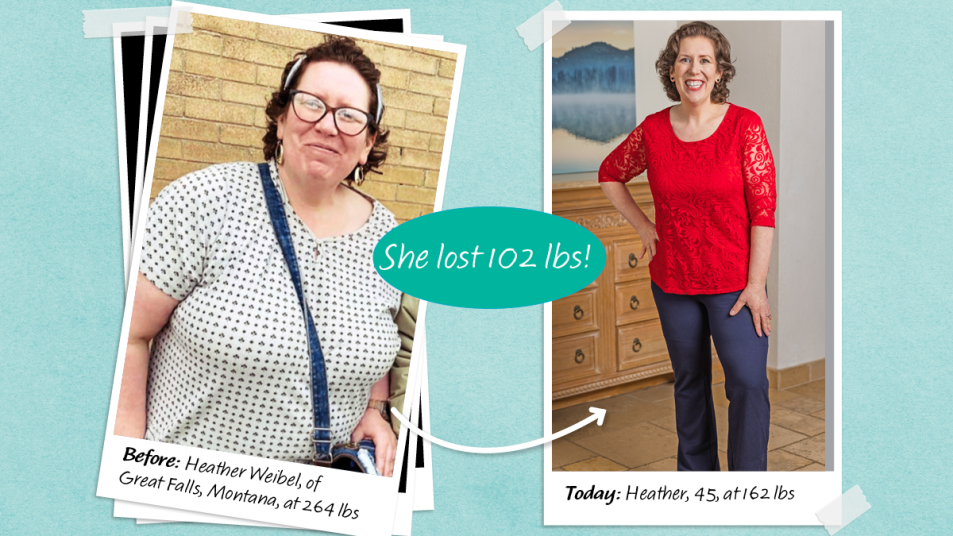
We’ve all heard that eating our vegetables is good for our health. Perhaps you’ve even tried a short-lived plant-based experiment such as “Meatless Mondays,” a “Meat Free Week” or even “Veganuary.” You’re on the right track. “Thinking about longevity, most of us would benefit from going to a more plant-based diet,” says Christopher Gardner, PhD, a professor at Stanford University School of Medicine. And an increasingly popular way to try a month-long experiment is to follow the Plant-Based Whole30 plan, the newest elimination diet from the program that’s been helping women heal their bodies since 2009. Keep reading to learn how Plant Based Whole30 can improve your health and even help you shed a few unwanted pounds. And don’t miss Heather Weibel’s amazing 100-pound success story at the end.
Why is Plant-Based Whole30 so popular?
Taking the plunge into plant-based eating has never been more popular. One survey of 1,461 healthy omnivores found that 87% were ready to explore eating more plant-based meals. Several factors are contributing to this growth. One factor to note is the recent Netflix series You Are What You Eat: A Twin Experiment. It highlighted the dramatic health and weight-loss benefits that can come from adopting a plant-based diet for as little as 4 weeks.
The series is based on a recent groundbreaking Stanford Medicine study, published in the prestigious journal JAMA. In the study, researchers followed pairs of identical twins. One group ate an omnivore diet (including meat, fish and dairy), while their genetically identical siblings ate a plant-based diet.
The study results: After four weeks, plant eaters saw improvements in cholesterol and insulin. And by eight weeks, they dropped their fasting blood sugar by 20%. Plus, they improved their “bad” LDL cholesterol by 663% and lost 4.2 pounds more than the meat eaters. People looking to replicate a version of the study in their own lives then turned to Plant-Based Whole30. Laurie Marbas, MD, double board-certified family medicine and lifestyle medicine physician and co-founder of The Healing Kitchen, says, “Embracing a plant-based diet, even for a short period like a month, can have profound effects on health and weight loss.”
What is Plant Based Whole30?
On this month-long elimination diet, you cut out animal products and fuel up on plant foods. You also avoid digestion-irritating and craving-fueling ingredients like added sugar, grains, dairy and alcohol for 30 days. Co-founder Melissa Urban, seven-time New York Times bestselling author, explains, “It targets food groups that scientific literature and 14 years of clinical experience have identified as commonly problematic in one of four areas: cravings, metabolism and blood-sugar regulation, digestion and immune system.”
After the 30-day elimination, you’ll slowly reintroduce foods back into your routine. (More on that below.) Short-term self-experiments like these are key for women’s changing bodies, according to Dr. Marbas. She says, “They shift the focus from a one-size-fits-all approach to a more personalized health and wellness journey.”
Plant Based Whole30 guidelines
Reach for these YES foods
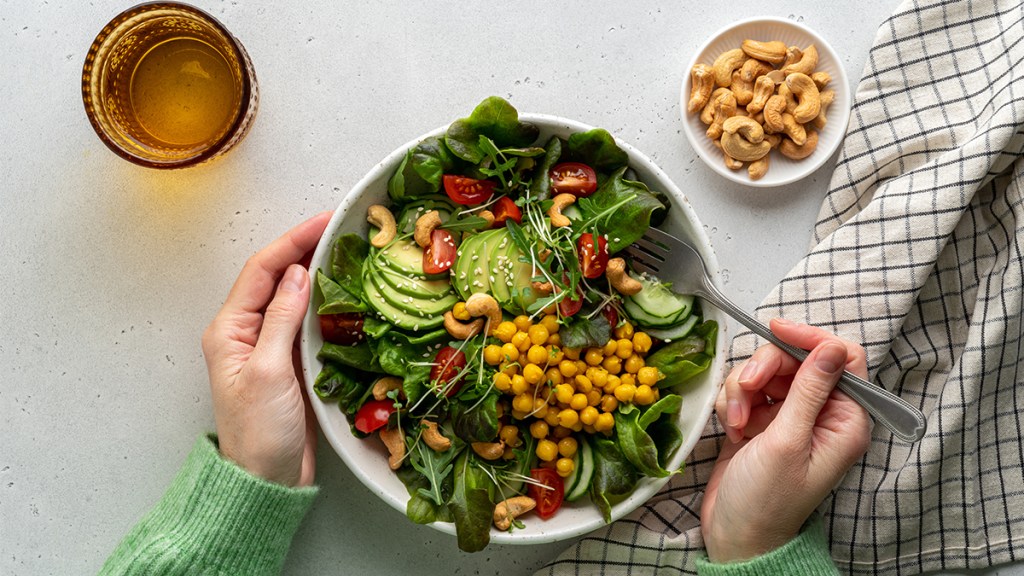
- Fruits, vegetables, nuts and seeds
- Plant proteins like legumes, lentils, peas and tofu
- Whole protein powders (from pea, hemp or chia)
- Plant-based fats like olive oil and coconut oil
- Herbs, spices and seasonings
Foods to AVOID for 30 days
- Animal protein (meat, fish and eggs)
- Animal fat (butter, ghee and lard)
- Added sugar including syrup, honey, agave nectar and xylitol
- Additives (like carrageenan)
- Grains like wheat, oats, corn and rice or pseudo-grains like quinoa
- Dairy like milk, yogurt or cheese
- Alcohol
- Also, no portion limits, calorie counting or stepping on a scale
Don’t forget this key part of Plant Based Whole30
The magic of the Plant-Based Whole30 plan is the six-plus days of food reintroduction that follow the elimination diet. Here, you slowly bring back foods to get valuable insights into which ingredients trigger symptoms. Urban says this self-experiment gives you “food freedom” to know what to eat for your unique body. “You learn to trust the signals your body is sending.”
So after 30 days on the plan, spend at least six days reintroducing eliminated foods to notice if they trigger symptoms like gas, headaches, body aches or cravings. Urban calls this “mission-critical” for getting the full benefits of the experiment. Slowly and systematically add back one of these food items each day or so: sugar, gluten-free alcohol, nongluten grains like corn, gluten-containing grains like wheat, animal dairy and animal protein. If you experience any symptoms, return to the Plant-Based Whole30 rules for two days to quiet symptoms before moving on. Your future body will thank you for it! Learn more here. (And click through for details on the original Whole30 Diet plan.)
How you’ll feel on Plant Based Whole30
Our testers report erasing their cravings and pesky digestive symptoms, while losing weight and inches. (While weight loss isn’t the sole focus of any Whole30 plan, it is often a welcome bonus.) Urban says, “In the absence of the hyperpalatable processed foods you’ve been eating, people report being amazed at the natural sweetness of strawberries or a roasted sweet potato.” And Dr. Marbas adds, “These experiments empower individuals with self-awareness.” As a result, they can make interventions “to alleviate symptoms like bloating, fatigue or skin issues.”
The health benefits of Plant Based Whole30
There is a mountain of research showing the health benefits of eating more plant-based meals. One highlight: It’s healthy for your heart, especially for older women. In a study of 123,330 postmenopausal women, Brown University researchers found that following a plant-based plan was associated with a reduced risk of cardiovascular disease, coronary heart disease and heart failure. Why that matters: “The approach of menopause marks a point in midlife when women’s cardiovascular risk factors can accelerate,” confirms dietician Wendy Bazilian, DrPH, author of Eat Clean, Stay Lean.
Why Plant-Based Whole30 is so powerful
Eating on a “plant-slant” delivers a variety of healing components to your diet, including…
1. Fiber
The plant foods that are eaten on Plant Based Whole30 are rich in fiber, which Urban calls a “health superhero.” In fact, some experts are even pushing to get fiber classified as an “essential nutrient.” Dr. Marbas adds, “Plant-based diets promote a feeling of fullness and reduce overall calorie intake, which can result in noticeable weight reduction.”
2. Protein
Protein intake is key for women as they lose muscle with age. But rest assured: Many plants like beans, lentils, peas, nuts and seeds contain protein. And it’s easy to get plenty of plant-based protein on the Plant Based Whole30 plan. “It’s a common misconception that plant proteins are inherently ‘incomplete.’ While individual plant foods may have varying levels of certain amino acids, consuming a varied diet throughout the day typically covers all nine essential amino acids,” says Dr. Marbas. “By incorporating a diverse range of plant-based foods into meals, you ensure an adequate protein intake.”
Urban adds, “Our Plant Based Whole30 meal template is designed to ensure at least 70 grams of plant protein a day — more than the RDA for the average woman.”
For example, start with tofu and add plant-based proteins like chickpeas or beans, plus veggies, spices and a plant-based sauce. (Consider Primal Kitchen healthy sauces and dressings, like avocado lime dipping sauce.) Combine as a scramble or bake into “muffins,” which freeze well. Plan to make extras to save you time on future meal prep.
3. Nutrients
We often crave foods because we’re lacking the vitamins and nutrients our body desperately needs. But plant-based foods can rich in all the good stuff. Urban says, “Because we prioritize whole, nutrient-dense foods and we don’t limit or count calories, participants feel satisfied and energized after meals and throughout the day.”
4. Anti-inflammatories
When people eat all the colors of the rainbow from plants, they often feel good, literally. It’s because the food’s naturally anti-inflammatory properties—delivered from vitamins and antioxidants—can reduce pain in joints.
Proof that Plant-Based Whole30 really works
Plant-based eating can truly be life changing and deliver total-body benefits. Kate Dunbar, 60, from Norfolk, U.K., suffered from severe psoriatic arthritis that kept her bedridden. But everything changed when she turned to a plant-based diet. She regained mobility, lowered her medication dosage by half and ultimately put her disease into remission. She says, “I have now rebuilt my body, all on plants, and I ran my first marathon last year!”
She’s not alone. Kelly Small, 45, used Urban’s Plant-Based Whole30 plan and lowered her cholesterol 27 points in 60 days, so she didn’t have to start taking Rx statin meds. And she reduced inflammation so much in two weeks she could wear her wedding ring again for the first time in years. Plus, she improved her blood pressure, blood sugar, sleep, mood and energy levels. She even lost 10 pounds and one clothing size. And keep scrolling to read Heather’s amazing 100-pound weight loss story…
Get started with these easy upgrades
- Instead of scrambled eggs, try scrambled tofu for added protein
- Instead of BBQ pulled pork, try roasted jackfruit to reduce sugar
- Instead of using mayo, try mashed avocado for a dose of healthy fats
- Instead of white rice, try steamed peas to reduce calories
Use these tips to support your journey
1. Choose smart snacks
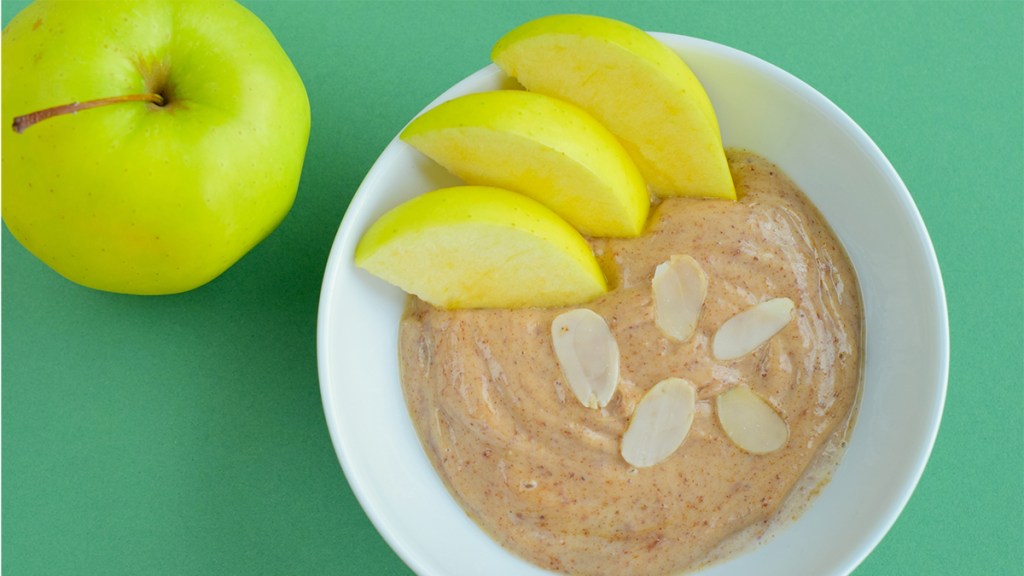
Urban’s equation for easy plant-based snacks: Pair at least two of the three macronutrients together (plant-based protein, fat and/or carbs). For example: Enjoy apples with almond butter. Or veggie sticks with hummus.
Related: The 10 Best Snacks for Weight Loss, Including What One MD Calls “The #1 Superfood in the World”
2. Keep tasty seasonings handy
Stock up on nutritional yeast, a natural source of protein and B vitamins that can be sprinkled on salads, soups and veggies, and hing, also called asafoetida. This seasoning has been used in eastern and Ayurvedic medicine for centuries as a digestive aid to reduce gas and bloating. Sprinkle it into olive oil as a start when heating a pan. You’ll find it in specialty markets or on Amazon. Urban says, “Don’t let the sulfuric scent put you off. A tiny pinch of this powerhouse amplifies other spices in a truly pleasing way.”
Related: This Cheesy “Secret Ingredient” Is Helping Women Over 50 Lose Weight, Eliminate Pain + Feel Amazing
3. Rely on easy meals
Urban’s advice for meal planning: Keep it simple. Skip complicated recipes and opt for a mix-and-match approach she calls “ingredient meals.” She explains, “Think of them like a template, requiring little-to-no measuring and tons of flexibility and variety.”
For an easy meal option, start with tofu and add plant-based proteins like chickpeas or beans, plus veggies, spices and a plant-based sauce. (Consider Primal Kitchen sauces and dressing like avocado lime dipping sauce.) To make: Combine as a scramble or bake into “muffins,” which freeze well. Plan to make extras to save you time on future meal prep.
Plant based success story: Heather Weibel, 45
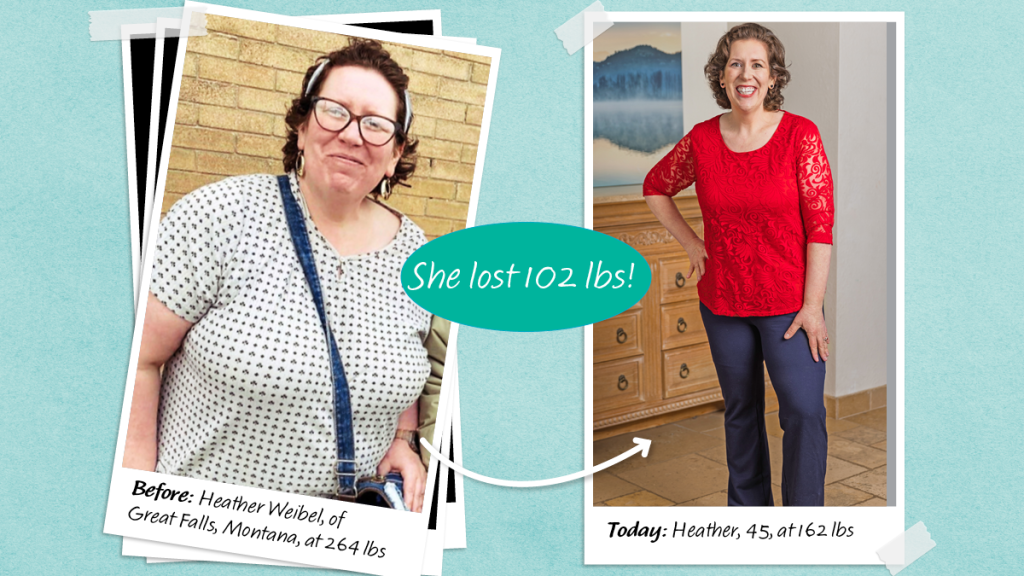
Everything was hard. Walking was hard. Sleeping was uncomfortable. Traveling was impossible. But the final straw came when Heather Weibel couldn’t lift her leg over the tub to get out of the shower. Even her husband had trouble moving her. That’s it, Heather thought. I’m done living this way!
Trying to adopt new, healthy habits, Heather started eating copious amounts of plants: big kale salads, fiber-rich spinach smoothies with chia seeds, protein-packed hummus and sweet potatoes. She also cut out dairy. Plus, she focused on staying positive and celebrated each small victory, like losing 1.6 pounds a week. Heather also watched as her inflammation and pain reduced. She recalls, “Plant-based eating changed my life right away.”
With the help of those plant-based meals and social support from TOPS.org, Heather lost 102 pounds in less than two years. “I no longer worry about taking cholesterol medicine, and all my blood work is perfect!” In fact, she can walk to work without using an inhaler and she said goodbye to her sleep apnea machine. “I feel good knowing I’m doing something to take care of myself when I’m older. I’ll look back and be proud I didn’t wait any longer.” She adds, “I lost half my size: from 24 to 12!”
Today, Heather reiterates, “I feel like I’m 20 again—that was the last time I remember being pain-free!”
This content is not a substitute for professional medical advice or diagnosis. Always consult your physician before pursuing any treatment plan.


